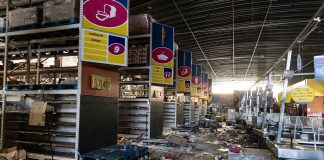
Photo: FW Archive
She told Farmer’s Weekly that not only did these statistics not reflect the monetary losses caused by stock theft, but also did not identify high-crime areas.
READ ‘Politicising stock theft doesn’t help SA’s farmers’
“This shows that the SAPS will have to rethink its strategy to effectively manage and prevent stock theft, especially in rural areas. No reference is made about the species of livestock that was stolen, arrests made and stock that was retrieved. The official statistics, in all likelihood, do not reflect the true state of affairs,” Buys added.
According to a SAPS statement, stock theft in the country increased by 0,6% in the third quarter of the 2022/23 financial year (October to December).
Gauteng showed the biggest increase of 39,8% compared with the previous quarter.
Stock theft in the Northern Cape went up by 31,3%.
In the Eastern Cape, cases increased by 8%.
Limpopo, North West and the Western Cape experienced increases of less than 4% each.
In the Free State, a decrease of 4,9% was reported while stock theft in Mpumalanga dropped by 6,8%.
In KwaZulu-Natal, stock theft cases dropped 9,7%.
READ Top Sussex breeder’s extreme measures to beat stock theft
In the second quarter of 2022, there were 24 districts in the Free State that had already reported more incidents of stock theft than during the previous financial year. According to Buys, it was vital that such data was reflected in the national crime statistics in order to identify high crime areas.
“Merely using the number of cases that were reported to determine the true extent of crime does not make sense. A true picture can only be formed if the monetary losses and the number of stolen animals in every case is made known,” Buys said.
“For instance, our analysis showed that the 13 Free State districts on the border with Lesotho represented 20,82% of stock theft cases in the province. To reach such a conclusion we needed detailed information on a wide front. Simply using the number of cases that were reported would have been folly,” Buys said.












